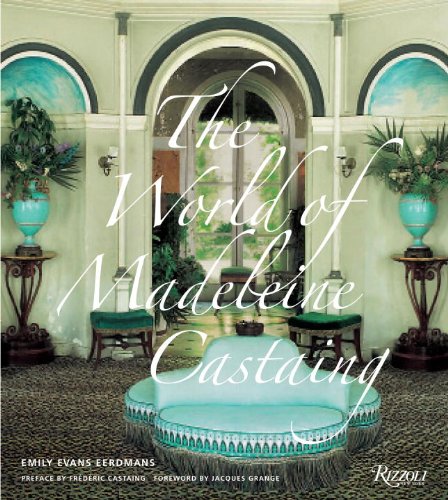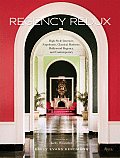Two things I remember from childhood are the ubiquitousness of the English poet and gardener Vita Sackville-West's books and the constant discussion of the moving and dividing of hostas. Only until this year did I see the point of either. In a recent interview, Rufus Wainwright remarked, "I was so averse to anything relating to gardening because I did always find it the most boring, retired-person thing to do. That being said, we have a garden now, and I’ve never been more excited in my life than waking up and seeing a little pea come out of the earth. It’s like a Wagnerian opera..." Like Rufus, the cultivating of one's own patch of dirt has proven to be a game changer and I now affectionately look after several hostas and have even had my first family conference on their relocation.
In anticipation of visiting Sissinghurst on this trip (which merely spanned several days, not months as my blogging pace might lead you to believe), I dusted off a few of the Sackville-Wests inherited from my grandmother. The first to be tackled was The Garden (full disclosure: first on account of its slimness and charming illustrations by Broom Lynne). Published in 1946, the book is in fact a 135 page poem traversing the four seasons with the presence of war felt throughout. It is elegiac and evocative, but, on my current high carb diet of reality shows, my attention soon wandered and it was in a moment laid down for V. Sackville-West's Garden Book.
Roses climbing along the tower's walls
A view of the tower where Sackville-West wrote; she kept several small bud vases on her desk and curated their contents with different seasonal blooms
I soon found myself in the index, cheating, looking up Small Gardens:
"I should plant only the best things in it, and only the best forms of the best things, by which I mean everything should be choice and chosen. When you only have a very small area to your command you cannot afford to be otherwise selective."
I then was curious to see how she would weigh in on the much maligned gladiola (yet beloved by the aesthete Oscar Wilde). Her abridged thoughts:
"I am never quite sure what I feel about the gladioli. Handsome, yes; wonderful in color, yes; … supreme in the late summer flower shows, yes, in those great peacock-tail displays like swords dipped in all the hues of sunrise, sunset, and storm. Here I come to a full stop and start saying No. I don't like their habit of fading at the bottom before they have come out at the top… I don't like the florist-shop look of them. No, take it all around, I cannot love the big gladiolus. It touches not my heart."
View from the Tower
Sackville-West and her diplomat husband Harold Nicolson purchased Sissinghurst Castle in 1930 where they lived until her death in 1962. As her daughter-in-law Philippa Nicolson describes in the foreword, Sackville-West formed a gardening philosophy: be ruthless (don't keep anything that displeased you the previous year); let plants self-seed and ramble; an architectural plan - with hedges, paths, and walls as well as with the relation of plants to each other - is essential; and, very interesting to my mind, not all parts of a garden have to always be in bloom. An area can be spent and attention can shift to another area.
Maeve's and my calves in the White Garden
Finally the fateful day had arrived and my friend Maeve and I drove to Kent. We arrived just before 5, having underestimated traffic and overestimated a map, but it was all for the best as we practically had the grounds to ourselves bar a German here and there. One enters the property via a long dirt road enclosed by ancient hawthorn hedges. Maeve told me one can date how old a hedge is by how many other vines have grown into it.
Sissinghurst's collection of roses is one of its great lures. Maeve was on the hunt to see one plantswoman (and wife of Adam Nicolson) Sarah Raven extolled, but alas we concluded it must already have bloomed.
I admired this pink beauty which was blowsy but also formal. As you rose connoisseurs already know, THE rose nursery is David Austen which Maeve and I decided is our next outing.
I found this arrangement centering the White Garden highly accessible and copyable
Entering the famous White Garden - Vita enjoyed planning one color gardens
"When I first started gardening I began the predictable path of being seduced by color and blooms. One of my mentors, gently explained the natural evolution of gardening. She said you know you have made to the other side when you think first of leaf color and form."
I love me a self-made obelisk. I have two jasmine-vine covered ones at home.
On the outer edge of the grounds is the Herb Garden
The Barn, adjacent to which is the gift shop and cafe where one can enjoy a glass of white wine.
After the aforementioned glass of white wine and the obligatory purchase of a tea towel, Maeve and I departed, eyes and soul full.
Reading list:
Adam Nicolson, Sissinghurst: An Unfinished History A marvelously intimate and frank history of the house, including its most recent history with the National Trust
Nigel Nicolson, Portrait of a Marriage On Harold and Vita's unconventional marriage by their son. The portrait of Vita by William Strang on the paperback's cover captured my curiosity as a young girl.
Vita Sackville-West, All Passion Spent A novel written as a companion to friend and former lover Virginia Woolf's A Room of One's Own in which the heroine can finally live life on her preferred terms. Spell-binding and high readable. Get the version with Joanne Lumley's foreword.
__________, The Garden
__________, Vita Sackville-West's Garden Book
And for your next 5 minute escape break, read this amusing Amazon review of Victoria Glendinning's bio of Vita.
Please excuse the undisciplined nature of this post. Consider it an homage to Vita's preferred rambling cottage garden.






















6 comments:
The most blissful place. I was there in May, and followed the back pathway behind the lake and into the woodland where a carpet of bluebells greeted me. Merchant-Ivory, eat your hearts out!
xo
Emily I loved following along on this ramble so fascinating. Ah if only I could write from a tower such as that at Sissinghurst Castle, gazing at that wondrous view.
xoxo
Karena
The Arts by Karena
Love this post. I just finished reading Adam Nicholson's Sissinghurst: An Unfinished History and loved it!
Also loved the film of Portrait of a Marriage with the brilliant Janet McTeer as Vita and David Haig as Hadji.
Also the film of All Passion Spent with Wendy Hiller.
Thanks again,
Ann
Pamela, The bluebells sound glorious - another reason to return!
Karena, Vita's tower must have been what Virginia Woolf was envisioning…
Ann, Just put the Wendy Hiller film in my netflix queue!
xx, EEE
What V S-W had to say about gladioli was spot on.
When young and foolish, I equated them with glamorous films of the 1930s, which led to towering stalks of gladioli atop the piano or, worse, the dining room table. Funereal, not glamorous, is what they were.
Thanks for this brief excursion to Sissinghurst, EEE.
Sissinghurst is high on my must see list so thank you for the tour! I just heard Brent Heath speak about heirloom bulbs this week and he extolled the virtues of the funeral flowers in the garden! I am like you however, the gladioli are not must-haves for me!
Post a Comment